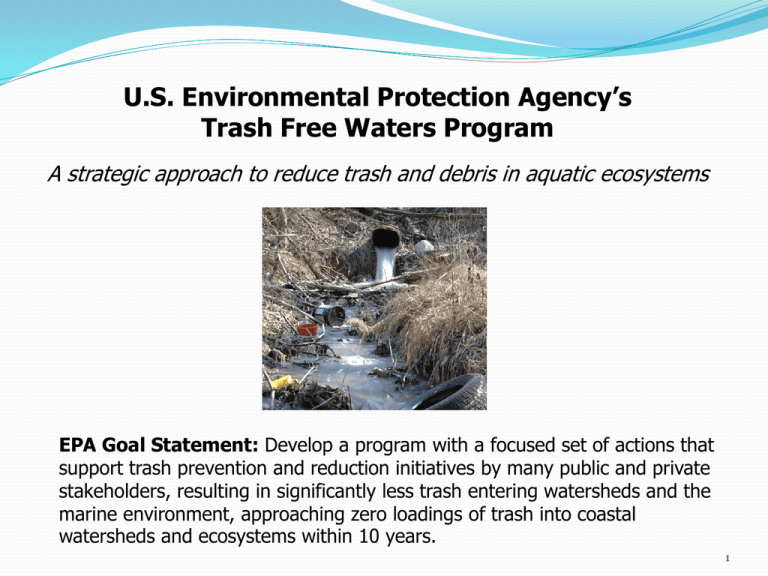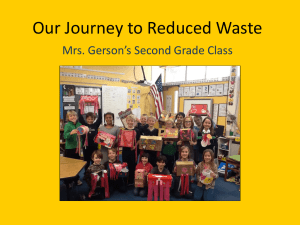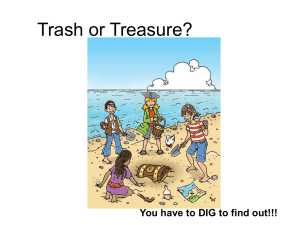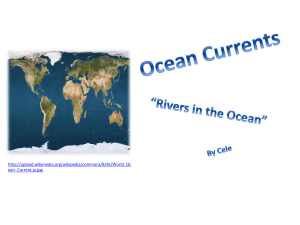Trash Free Waters PPT
advertisement

U.S. Environmental Protection Agency’s Trash Free Waters Program A strategic approach to reduce trash and debris in aquatic ecosystems EPA Goal Statement: Develop a program with a focused set of actions that support trash prevention and reduction initiatives by many public and private stakeholders, resulting in significantly less trash entering watersheds and the marine environment, approaching zero loadings of trash into coastal watersheds and ecosystems within 10 years. 1 Aquatic Trash Impacts ● Trash is a pervasive problem for oceans and coasts, economic, aesthetic, and ecological impacts. causing ● No aggregate trash loading number exists (yet), but 2011 international coastal clean-up events collected over 9 million pounds of trash in a single day. ● Approximately 80% of aquatic trash comes from land-based sources. Trash on land has numerous pathways into aquatic ecosystems. ● Over 51 billion pieces of litter end up on US roads each year. ● Litter cleanup costs the U.S. almost $11.5 billion each year. ● Plastic is estimated to make up 60-80% of marine debris. Highly durable plastic containers and packaging are used for many short-term, and often single-use, purposes. ● Plastic aquatic trash appears to be a vector for the transfer of Persistent Bioaccumulative and Toxic chemicals from the water to the food web, increasing risk to all animals in the marine food web, including humans. ● The public can relate to reduction of aquatic trash as a worthwhile goal. 2 EPA’s Trash Free Waters Program A strategic approach to reduce trash and debris in aquatic ecosystems Tackling A Global Environmental Problem with Major State & Local Impacts: Trash is a pervasive problem for oceans and coasts, causing major economic, aesthetic, and ecological impacts, and possibly human health impacts as well. Approximately 80% of aquatic trash comes from land-based sources. Much of this trash is plastic. A New EPA Priority: Trash Free Waters projects support trash prevention and reduction initiatives by many public and private stakeholders to significantly reduce the volume of trash entering watersheds and the marine environment. EPA seeks zero loadings of trash into coastal watersheds and ecosystems by 2023. Current Projects Address the Top Issues and Leverage Points: 1) Calculating the direct and indirect costs of trash to society. 2) Assessing possible human health effects from microplastics in the marine food chain. 3) Studying the ecological effects of trash on marine animals and plants. 4) Developing next-generation behavior modification strategies for trash prevention. 5) Exploring public/private partnerships for litter prevention and material recovery. 6) Creating a communications and info-exchange network for interested stakeholders. 7) Defining credible metrics to assess the success of trash reduction programs. 3 EPA’s Trash Free Waters Program Regional strategies to enhance state & local trash prevention programs A systematic planning process: Inventory existing programs. Consult with government, business, NGO, and citizen stakeholders. Brainstorm ideas for collective actions that “add value” to ongoing efforts by enhancing “drivers” and removing “barriers.” Facilitate dialogue and consensus. Support project collaboration and implementation. Measure results. Regional TFW programs established and under development: • California/Pacific Islands – Mature trash/debris program led by EPA Region 9; activities include regulatory and non-regulatory projects, research, outreach. • Mid-Atlantic (VA/MD/DE) – Facilitated stakeholder dialogue process has identified regional “value-add” projects to supplement state and local program efforts; focus on trash prevention BMPs and municipal public/private partnership pilots. • Gulf of Mexico – Major scoping effort underway to connect with a wide range of stakeholders, inventory current programs and interests, and identify “value-add” projects. • Puerto Rico – New scoping effort will support a major trash prevention initiative in PR. • Mid-Atlantic (NY/NJ) – New scoping effort starting this summer. • Future regional programs – Great Lakes, New England, Pacific Northwest. 4






